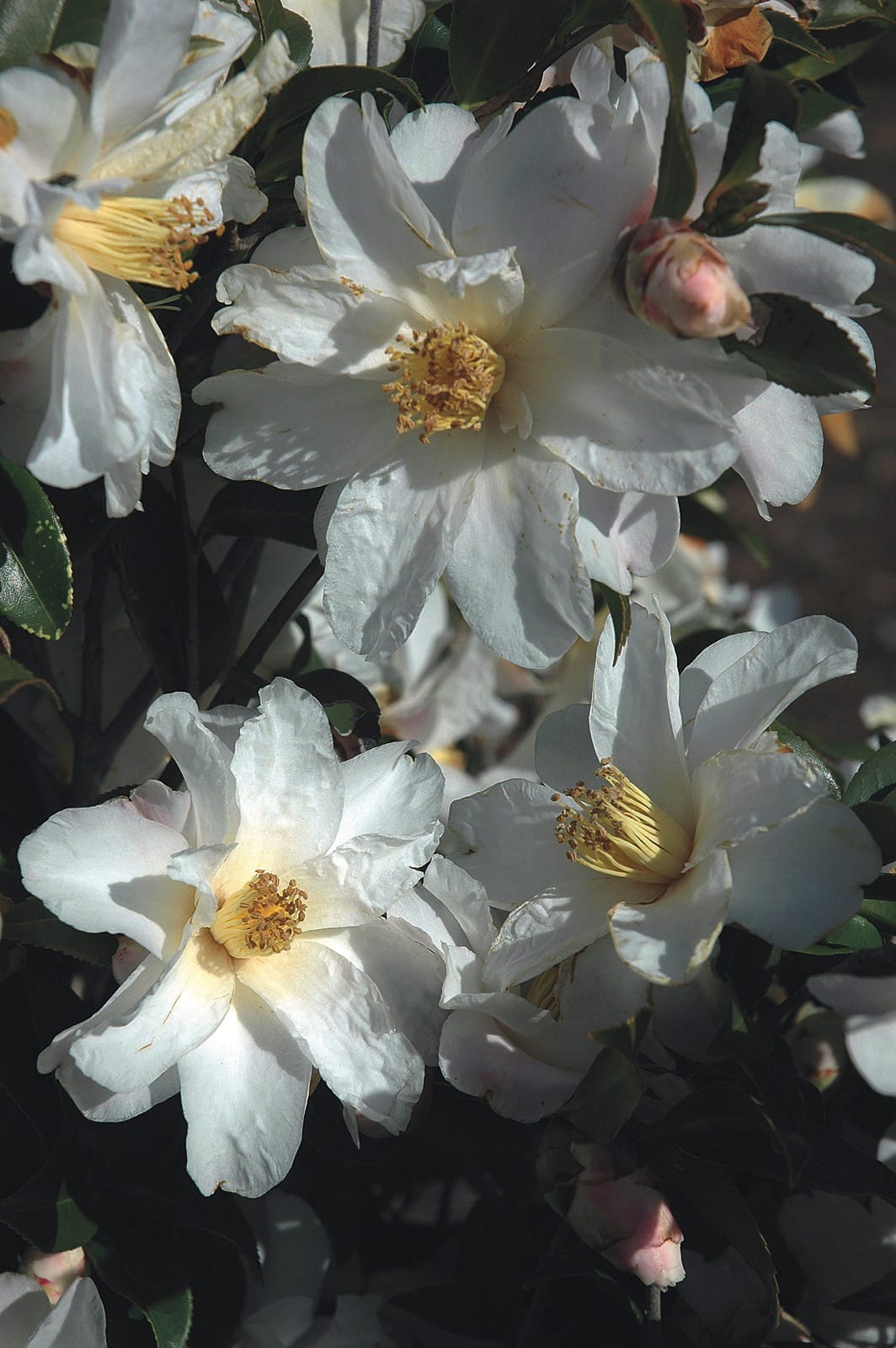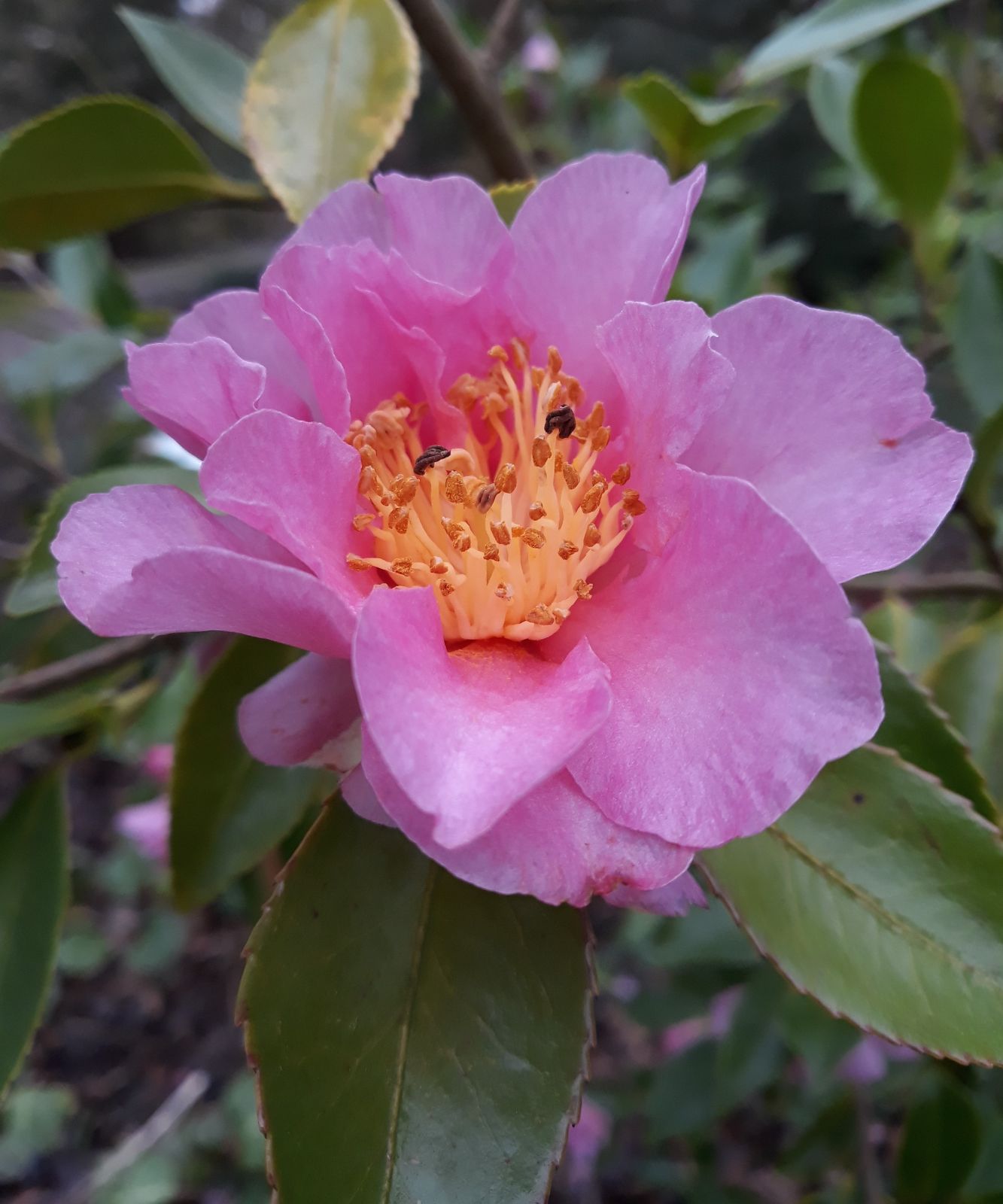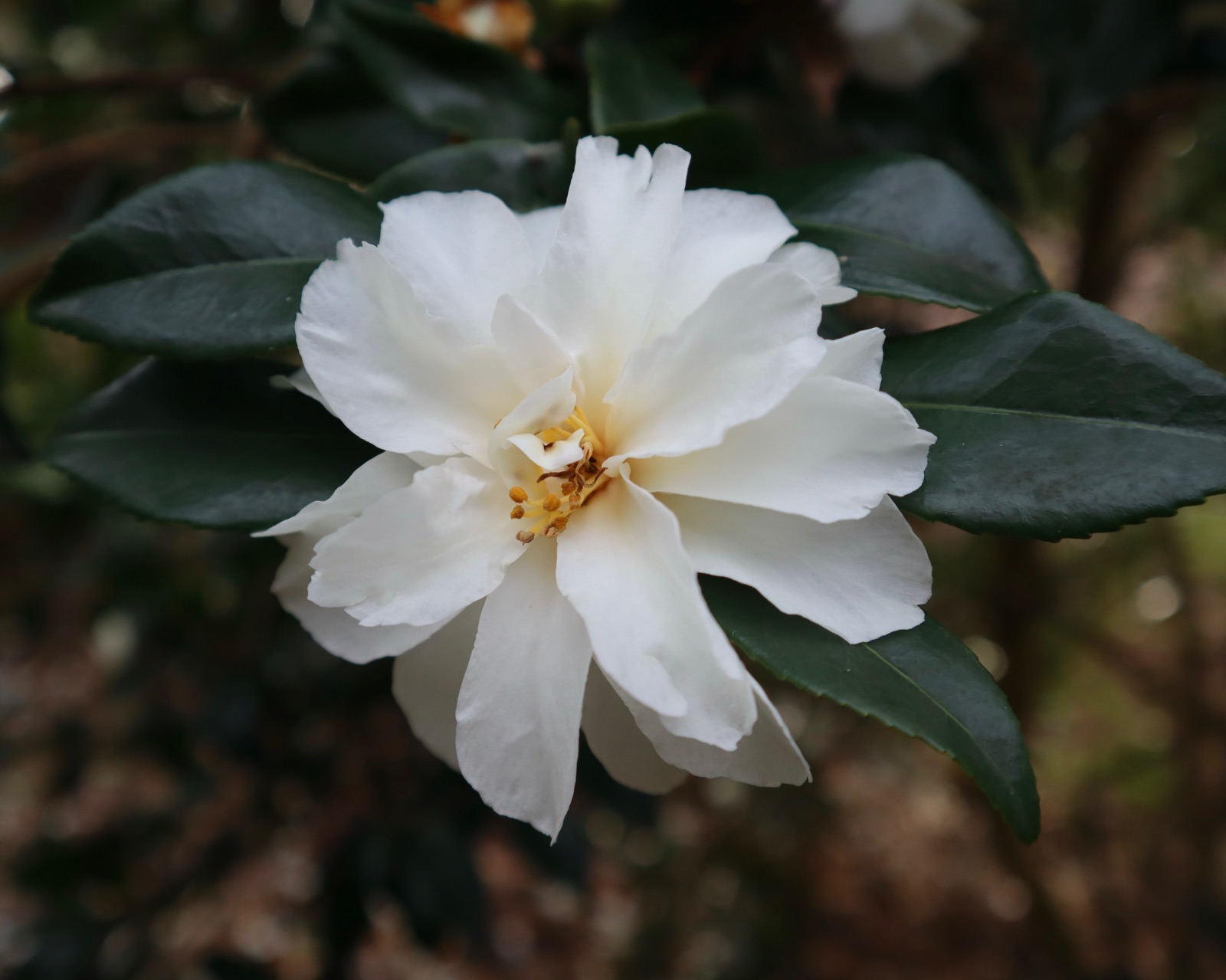Camellia × vernalis
Credits
Article from New Trees by John Grimshaw & Ross Bayton
Recommended citation
'Camellia × vernalis' from the website Trees and Shrubs Online (treesandshrubsonline.
Genus
Synonyms
- C. × hiemalis Nakai
Other taxa in genus
- Camellia brevistyla
- Camellia caudata
- Camellia chekiangoleosa
- Camellia chrysantha
- Camellia costei
- Camellia crapnelliana
- Camellia cuspidata
- Camellia drupifera
- Camellia edithae
- Camellia forrestii
- Camellia furfuracea
- Camellia granthamiana
- Camellia japonica
- Camellia kissii
- Camellia lutchuensis
- Camellia maliflora
- Camellia oleifera
- Camellia ptilophylla
- Camellia reticulata
- Camellia saluenensis
- Camellia sasanqua
- Camellia sinensis
- Camellia taliensis
- Camellia tsaii
- Camellia × williamsii
- Camellia yunnanensis
Several Camellia species are known only from cultivation and do not have wild populations. These include C. maliflora, C. uraku and C. wabiske. The origins of these taxa are uncertain, but two additional cultivated species, often called C. vernalis and C. hiemalis, are probably best treated as more-or-less ancient hybrids, with C. japonica and C. sasanqua as parents. In addition, many of the cultivars of ‘true’ C. sasanqua may actually be products of C. sasanqua × C. japonica hybrids that backcrossed with the C. sasanqua parent (Parks et al. 1981). According to Chang & Bartholomew (1984), all hybrids with C. japonica and C. sasanqua as parents (including many C. sasanqua cultivars) should be united under the oldest applicable name, C. × vernalis.
Camellia ×vernalis differs from C. sasanqua in that it has glabrous branchlets and larger, shiny, glabrous leaves. As the specific epithet suggests, it flowers in spring, usually in March. Camellia sasanqua flowers from September to the beginning of January, with most flowers produced in November. Plants known as C. ×hiemalis are more reminiscent of C. japonica, but they have pink or white flowers with a pubescent ovary (Sealy 1958, Chang & Bartholomew 1984) . Many very good garden plants belong to this group, and in milder areas will flower through the winter.



